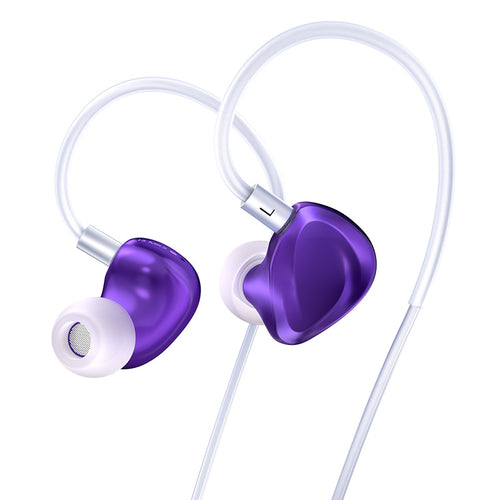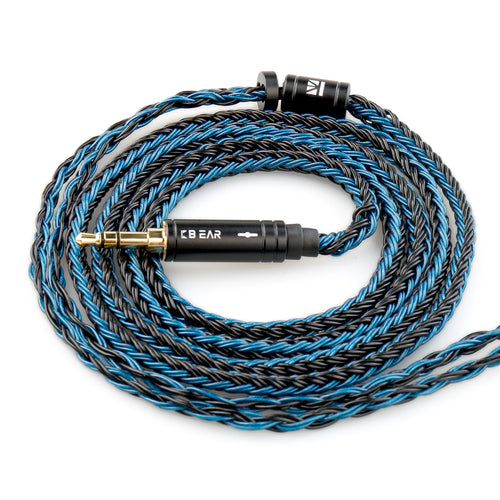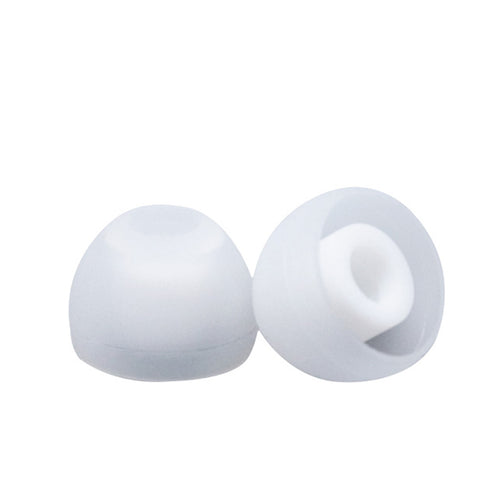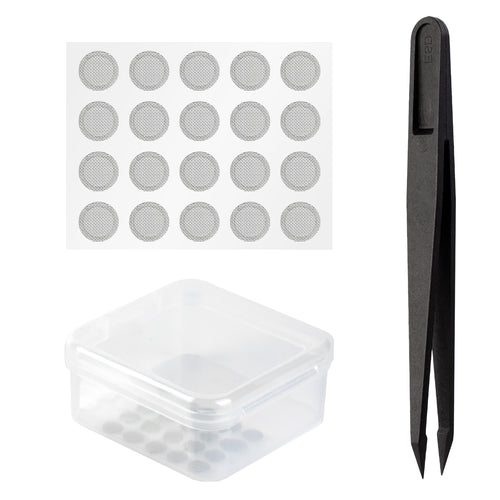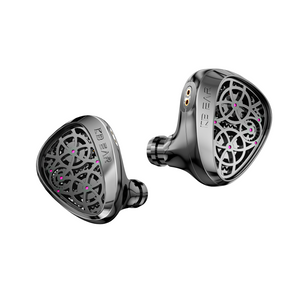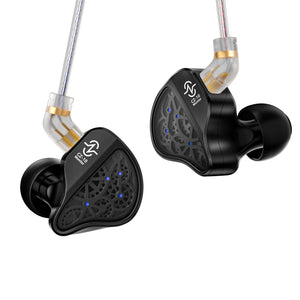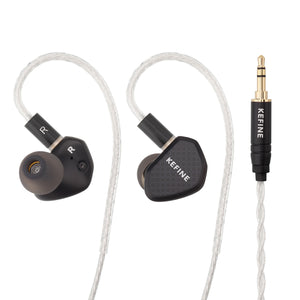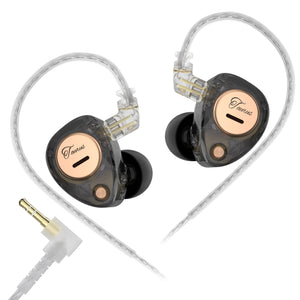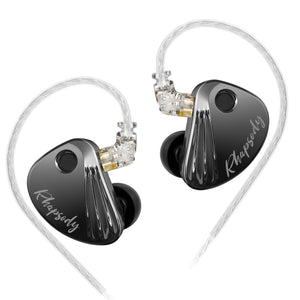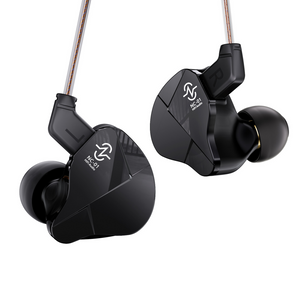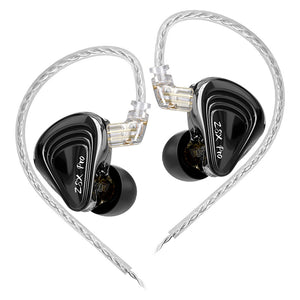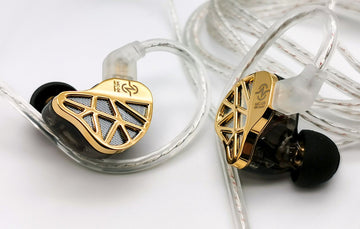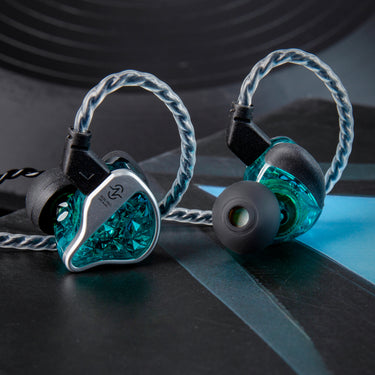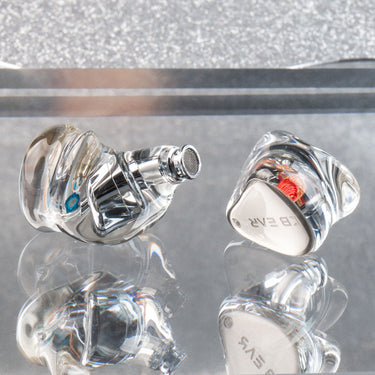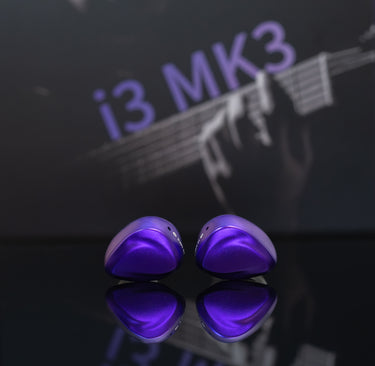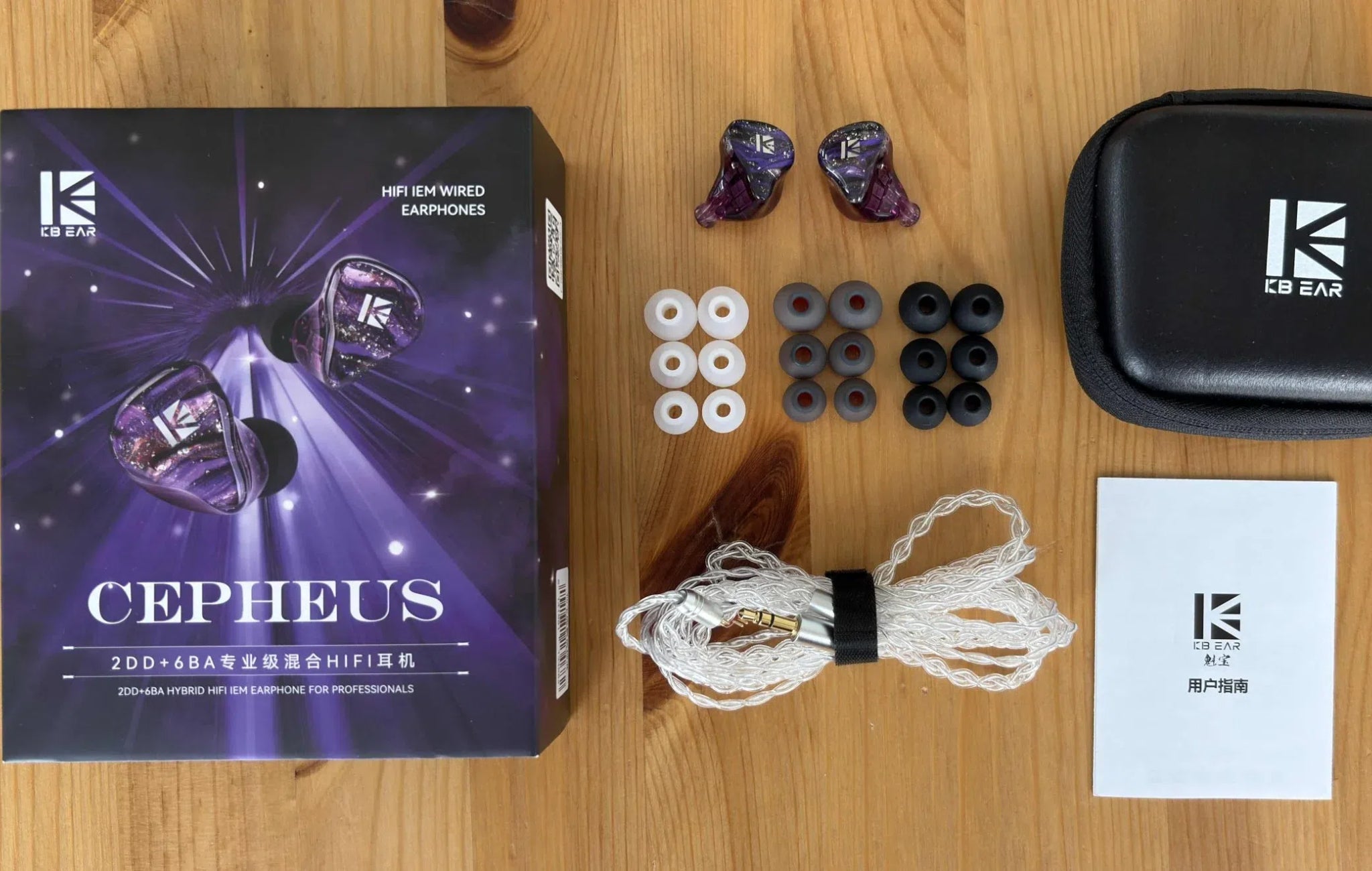Disclosure: I’d like to thank KeepHiFi for sending me the KBEAR Cepheus KB16 for this review. All thoughts and opinions are my own, and KeepHiFi had no say or input on the contents of this review.
The KBEAR Cepheus KB16 immediately raises eyebrows with its ambitious eight-driver configuration. We’re talking serious hardware here, with two dynamic drivers (10mm + 6mm) working alongside six custom balanced armature drivers, all packed into a transparent resin shell that lets you peek at the complex internal components. At $248, it positions itself as KBEAR’s flagship offering in the increasingly competitive mid-range IEM market. KBEAR is mostly known for budget-friendly IEMs, so venturing into the mid-fi market is interesting as it is increasingly becoming very crowded and competitive.
As I mentioned earlier, the Cepheus KB16 has a rather unique hybrid driver setup. Hybrid driver configurations have become very popular over the last year or so, and what matters with them is how they are tuned. The Cepheus name comes from the constellation in the northern sky, which was named after the king of Aethiopia in Greek mythology. It also means “power and wisdom” in Chinese mythology. By the name, it would seem that KBEAR is aiming to be the king of the mid-fi IEM market. The question will be, then, does the sound profile and tuning of the KB16 warrant the price? Let’s get into the review and find out.
Key Specifications
- Product Page: https://keephifi.com/en-ca/products/kbear-cepheus-kb16-upgraded-2dd-6ba-hybird-drivers-hifi-in-ear-monitor-earphones-iem-for-audiophile-musician-dj-stage
- MSRP: $248 USD
- Type: IEM (in-ear monitor)
- Driver Type: 1x 6mm Dynamic Driver (DD), 1x 10mm Dynamic Driver (DD), 6 x custom Balanced Armature (BA)
- Frequency Response: 20 Hz – 20 kHz
- Impedance: 14 ohms
- Sensitivity: 102 dB SPL
- Weight: grams per earbud
- Connection: 0.78mm 2-pin connector
- Detachable Cable: Yes
In the Box and Unboxing
- KBEAR Cepheus KB16
- 1.2m cable with 3.5mm termination
- 3 sets of S, M, L silicone eartips
- Storage case
- Documentation
The KBEAR Cepheus KB16 comes in packaging that makes an understated first impression. Everything is packed neatly in the box and is fairly typical of IEMs in this price point. No flashy graphics or over-the-top presentation here, just a clean, quality-focused unboxing experience that protects the IEMs while showcasing them effectively.
KBEAR includes a high-quality braided copper cable that both looks and feels premium. It features a solid 2-pin connection at the IEM end and a standard 3.5mm termination. There are no microphonics (cable noise) when listening to the IEMs, and the cable is very light and malleable. It includes a chin slider that is very stiff, but that ensures it won’t slide down when you set it where you want. I really like the cable as it feels high quality without being weighty.
The included silicone eartips are the standard ones that are included with most IEMs, and while I do like the amount that is included (3 sets of S, M, L), I do wish there would be some variety in tip type. The included case is also standard and nothing special; it simply gets the job done and is functional.
Design & Comfort
The KBEAR Cepheus KB16 looks stunning in my opinion. Mine are the purple/violet version, and they really stand out. The faceplate has a wavy color pattern that sparkles in the light, with the only branding being a reflective KBEAR logo. If Cepheus relates to the constellation, then you get an almost night sky feeling when looking at the IEMs. The shell is transparent resin, which allows you to see all of the interior components, including the DD and BA drivers.
The shell design KB16 is ergonomic and follows the natural contours of the ear remarkably well, with a nozzle angle that aligns perfectly with my ear canal. This creates a secure seal that hasn’t broken even during walking and moving around. The IEM sits very securely in the ear. This is also due to another reason, which is the slightly larger diameter at the tip of the nozzle, roughly 6.5mm. For me, this nozzle size introduces some slight discomfort after listening for more than an hour, but I do have slightly smaller ear canals. The shell design is so comfortable that it mostly offsets the nozzle discomfort for me.
Despite housing two dynamic drivers and six balanced armatures, the Cepheus maintains a surprisingly manageable weight and size. The center of gravity sits close to the ear canal, which prevents that annoying leverage effect where heavier IEMs gradually work themselves loose. The IEMs do stick out of the ear a bit due to their size, but not as much as one would think given the internals.
One design element that doesn’t get enough attention in IEMs and their reviews is ventilation. Many multi-driver IEMs create an uncomfortable “plugged” feeling, but KBEAR has incorporated subtle venting that equalizes pressure without compromising isolation. This makes a massive difference during longer listening sessions and is very noticeable with the KB16.

Overall, KBEAR has done an excellent job balancing technical performance with practical comfort, something that’s often sacrificed in driver-packed IEMs at this price point. For anyone who plans to use these throughout a workday, the comfort factor alone makes these worth considering, as long as you don’t have small ear canals.
Sound Quality
Sources used for this review:
- Sony NW-WM1AM2
- HiBy R4
- Shanling UP6
- Surface Laptop 7
Music playlist used for the majority of testing: https://music.apple.com/ca/playlist/hifi-oasis-audio-testing/pl.u-lKWlcjy04xp
Power and Drivability
The KB16 is very easy to drive. You don’t need a powerful or dongle DAC or amplifier, just a simple dongle DAC like Apple’s USB-C to 3.5mm dongle will be fine. I even had no issues with using the 3.5mm headphone output on my Surface Laptop 7. These IEMs don’t really scale with better sources, which is nice as it means that you will get their full sound quality regardless of your source.
Driver Configuration and Sound Profile
The complex hybrid setup with eight drivers per side creates a distinct sonic character that’s worth examining in detail. From what I’ve been able to gather, from both Keep HiFi’s own documentation and from just listening to the KB16, the driver configuration works like this. The 6mm DD focuses on mid to high frequencies, the 10mm DD is used for bass reproduction. 4 of the BA drivers are used for the midrange, and two of the BA drivers are for the higher frequencies. In theory, this gives the KB16 a lot of capability and versatility.
In practice, it actually does just that. The Cepheus KB16 follows a slight V-shaped tuning (see my graph below) that tends to emphasize vocals, with great sub-bass extension and an airy upper treble.
Link to graph: https://squig.link/lab/hifi-dawson/?share=Harman_IE_2019_Target,KBEAR_Cepheus_KB16
Bass
The Cepheus takes an interesting approach to bass presentation, prioritizing depth and extension over raw impact. The sub-bass reach is genuinely impressive, creating that physical sensation of rumble when called for in tracks like Massive Attack’s Angel, or Avaritia by deadmau5. However, the mid-bass is more restrained than I expected, lacking some of the punch that bass enthusiasts might be looking for. This is more noticeable in synthetic bass elements, where you’re expecting to feel more impact instead of just hearing it. For kick drums and bass guitar, though, there is appropriate texture and fullness to them. They have impact as well as clarity, which is very noticeable in a song like When the Levee Breaks by Led Zeppelin.
Midrange
Vocal reproduction stands out as the real highlight of the Cepheus KB16. Female vocals especially shine, sitting slightly forward in the mix with clarity and articulation. The midrange has this wonderful ability to reveal subtle details like breaths and vocal inflections in recordings that lesser IEMs can simply gloss over. Listen to Lana Del Ray’s Blue Banisters with the KB16 and you’ll hear what I mean.
Male vocals maintain good body without becoming overly thick or chesty. Kurt Cobain’s vocals in the Nirvana track You Know You’re Right are excellently reproduced and sound gravelly and deep when needed. The KB16 is able to smoothly handle the transition between bass and midrange sounds, a common weakness in hybrid IEMs that often creates a disconnected feeling between frequency ranges. The crossover design here is clearly well-implemented, creating a cohesive sound that doesn’t feel like different drivers handling different parts of the spectrum.
The midrange overall is very detail-focused, and it’s clear KBEAR made a large effort to make the KB16 sound as transparent as possible here. At higher volumes, the upper-midrange starts to get into harsh-sounding territory, especially on brighter tracks, though it ultimately was not an issue for me. Just something to be aware of if you’re sensitive to this.
Treble
The treble response offers plenty of sparkle and air without becoming harsh or fatiguing. Cymbals and hi-hats maintain their natural shimmer and decay characteristics, while string instruments convey appropriate texture and resonance. Even at higher volumes, the Cepheus resists becoming sibilant on tracks that typically expose such weaknesses, such as Radiohead’s Reckoner.
This balanced approach to high frequencies contributes significantly to the KB16’s comfort during extended listening sessions. There’s enough energy to prevent the sound from feeling dull, but it never crosses into the territory where you’d reach to turn down the volume during treble-heavy tracks.

Soundstage and Imaging
The standout technical achievement of the Cepheus KB16 has to be its soundstage presentation. The spatial image extends noticeably beyond the physical constraints of typical IEMs, creating a genuine sense of width that’s rare in this price range. Instrument separation remains excellent even in densely layered orchestral pieces or jazz ensemble recordings. Height representation, often a challenge for IEMs, is handled competently, allowing for accurate positioning of sounds throughout the soundscape.
Imaging is excellent, and it is easy to identify the direction each sound is coming from. The directionality is clear and accurate.
Gaming
I was curious how the KB16 would handle gaming given its technical prowess, especially with its sound profile that, on paper, lends itself well to gaming. In PUBG, footstep directionality was rendered with excellent accuracy, providing a genuine competitive advantage when tracking enemy movements. They were also clearly distinguishable in the audio mix without needing to EQ. The controlled bass tuning actually helps here by preventing explosions from masking crucial positional audio cues, while the clean treble ensures that subtle environmental details remain clear during intense gameplay moments.
For single-player experiences like Cyberpunk 2077 and The Elder Scrolls IV: Oblivion Remastered, the wide soundstage creates an enveloping atmosphere that enhances immersion. Dialog remains clear and centered while environmental effects properly surround the player character. If you’re a gamer who also wants great music performance, the Cepheus KB16 offers an excellent dual-purpose option.
Final Thoughts
After listening to the KBEAR Cepheus KB16 for a few weeks now, I’ve come to appreciate what KBEAR has achieved with this ambitious IEM. The eight-driver hybrid configuration isn’t just impressive on paper, it delivers real-world performance that stands out in the increasingly crowded $250 price bracket.
The Cepheus KB16 excels particularly in soundstage width and instrument separation, areas where many IEMs at this price point still struggle. The slightly V-shaped sound profile gives the KB16 extreme versatility. It’s suitable not only for all music genres, but also performs very well as a gaming IEM, even for competitive gaming.
However, I have to acknowledge that the KB16 won’t cater to everyone’s preference. The controlled bass response prioritizes accuracy over impact, which might disappoint listeners seeking that visceral punch and rumble. As well, the upper midrange approaches fatigue territory on bright tracks. At $248, this enters the price range where personal preferences matter significantly, so these details matter.
The KBEAR Cepheus KB16 sounds phenomenal, and also rather unique. It has an extremely cohesive sound signature, making music very enjoyable to listen to for both for casual and critical listening. It excels at soundstage and imaging performance, and really makes for a fantastic all-rounder IEM. I have no real nitpicks about the sound quality. If I had to critique something, it would be the very average accessories that are included, especially the eartips. If the sound profile sounds like something you enjoy, I have to highly encourage you to try the Cepheus KB16. I don’t think you will be disappointed.
